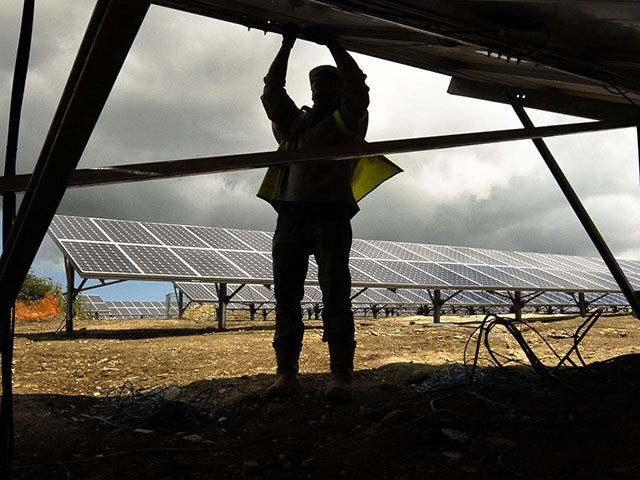
Hundreds of new solar farms could be at risk from the Government’s plans to change the subsidies for large scale projects, it has been warned.
Support for new large scale solar farms under the existing “renewables obligation” would be stopped from April next year, two years before it ends for other renewable technologies, under plans out for consultation.
But Juliet Davenport, chief executive of renewable energy generator and supplier Good Energy, warned that the plans could put at risk developments which companies had already spent hundreds of thousands of pounds on.
Good Energy is concerned that 60%-70% of its developments in the pipeline – around six schemes – may not receive subsidies as a result of the changes, with other developers in the same situation and potentially hundreds of projects at risk.
Davenport called for changes to the implementation of the Government’s plans to ensure schemes that were already in development, and had spent money on submitting planning applications and other requirements, did not miss out.
And she called for changes to the new system for subsidies for large low-carbon power, the “contracts for difference” scheme which will pay generators a guaranteed price for their power, to make them work for large scale solar.
Under the proposals for the new system, companies will take part in an annual auction to bid for the contracts that deliver the subsidies.
Davenport said the process was less suitable for smaller schemes which took much shorter periods of time to develop and build than offshore wind or nuclear, and urged the Government to consider separate auctions for smaller projects, such as solar farms.
“Solar as a technology is looking to decrease its price and be close to subsidy-free by 2020, and at this point it become less political and more market-driven. But we do need to see support continue to that point,” she said, and added that, as an energy supplier, “I don’t want to be adding additional costs to consumers for support mechanisms, I want to be making sure the cheapest technologies are coming through, and solar potentially offers that.”
Solar farms, which cover fields or other areas of ground in panels to generate electricity from the sun, can be controversial because of their visual impact on the countryside.
But the Good Energy boss said solar was the most popular form of renewables, with 80% of the public backing the technology, and that a 180-acre development by the company on an old airfield had not received a single objection in planning.
Measures could be taken to prevent solar farms having an impact on the countryside, she said, for example by screening them from view.
They could also have a benefit for wildlife, as the ground between the panels can be sown with wildflowers and provide habitat.
“Where they have been deployed with biodiversity, we are seeing them as potential biodiversity corridors particularly in intensive agriculture areas,” she said.
But she warned that these sorts of benefits could be hit if the industry was squeezed by the changes to the subsidies, if it meant smaller players could not survive in the sector and larger, corporate developers came in instead.
The Government wants to focus its support towards deploying more solar panels on the top of industrial and public sector buildings, which it says provides benefits such as more jobs and lower energy loss than solar farms.
Davenport said commercial building arrays should be given a “bite of the apple” but warned there were a number of non-financial issues standing in the way of roof-top developments.
Recommended for you
